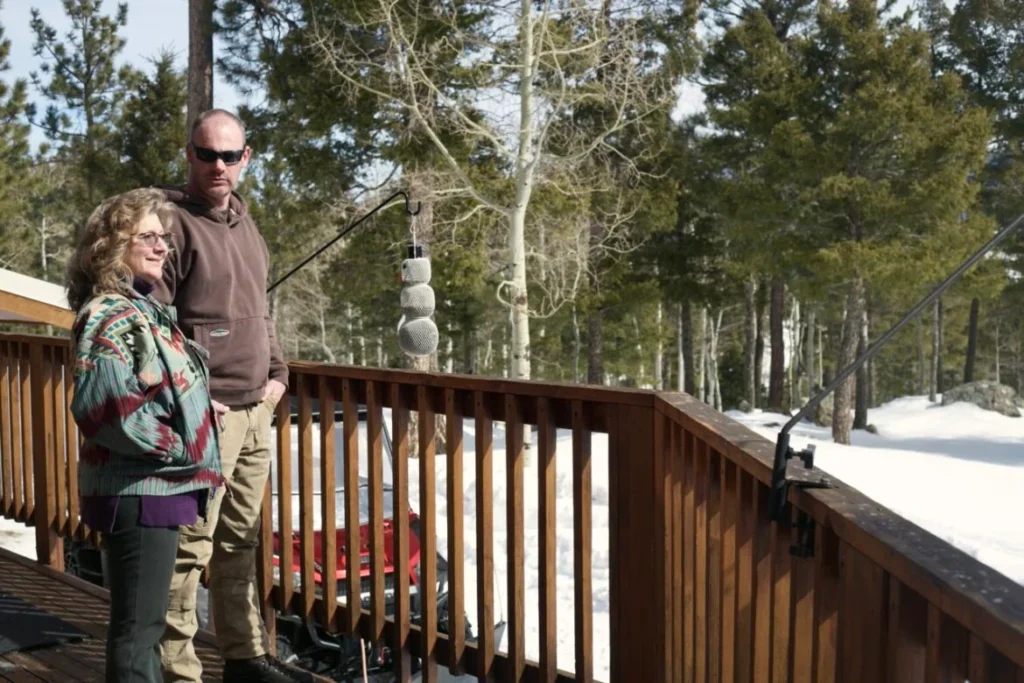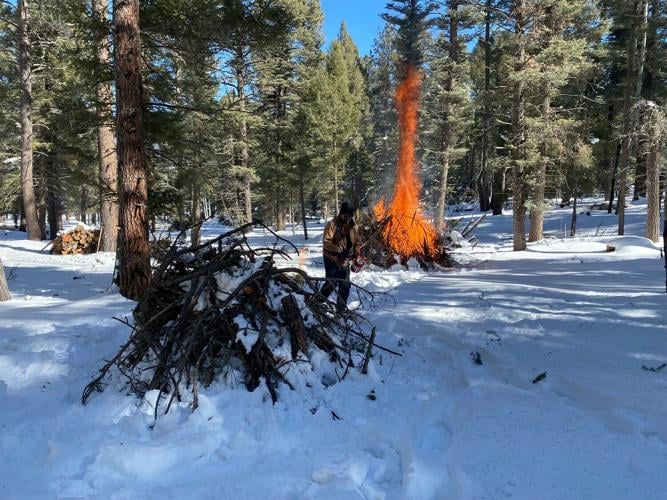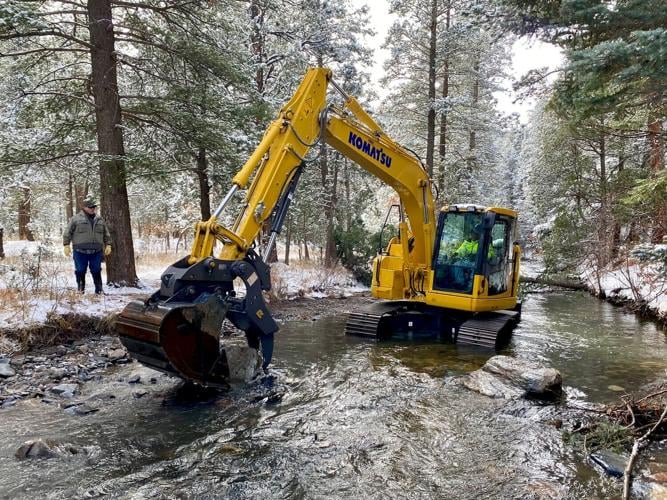The water crisis in New Mexico has a ripple effect statewide, cutting across the different geographies and ecosystems that make the Land of Enchantment so special.
In the last few years, our state has been at the bullseye of extreme wildfire and flooding, from the Gila to Ruidoso to Los Alamos, and the most recent Hermit’s Peak/Calf Canon Fire.
While the attention has rightly focused on the damage to people’s homes and properties, many New Mexico communities have long understood the chain reaction that wildfire is having on our water supplies.
Rick Smith understands this because he lives it every day. He leads a local, non-profit group of mostly volunteers known as the Cimarron Watershed Alliance (CWA). They are the only on-the-ground forest and watershed restoration group in Colfax County, and their territory is vast: the 1.5 million acre “Enchanted Circle Priority Landscape” covers Colfax and extends to Mora and Taos Counties in the mountains of Northeastern New Mexico.

The waterways here are world renowned; the Rio Grande boasts a national monument and successful river rafting industry, and state parks near Cimarron and Eagle Nest support vibrant trout streams, as well as reservoirs for drinking and irrigation water to numerous communities. Local cultures run deep, and many families have settled there for centuries.
For the last two decades, wildfire has threatened these water sources, and the danger is only growing.
The community of Raton is still recovering from the Track Fire of 2011, which burned close to 27,8000 acres and damaged the city’s primary drinking water supply, Lake Maloya.
The Ute Park Fire in 2018 burned another 36,000 acres between Cimarron and Eagle Nest.
And the Cooks Peak Fire in 2022 burned 60,000 acres, including 3,000 acres of the national headquarters of the Scouts of America, the Philmont Scout Ranch.

This, in part, is why the State of New Mexico has identified the region as having a very high concentration of watersheds with a high wildfire risk to water source protection, communities, and biodiversity, according to the state’s Forest Action Plan.
For Smith and the Cimarron Watershed Alliance, they’ve known about these problems for more than 20 years.
Back in 2002, the Ponil Complex Fire burned 92,000 acres in Colfax County and severely damaged local watersheds. It was at that time the largest wildfire in state history.
Fearing long-term damage to the area’s water supplies, residents organized themselves into the Cimarron Watershed Alliance, eventually expanding into work on riparian and stream projects – a trend that continues to this day.
Smith was previously a land manager at a nearby ranch and worked for decades in land and natural resource management for many local private ranches. The urgency of the situation today is not lost on him.
“We’ve been out of time for two and a half decades,” he shared. “We have to start doing something.”
Fast forward today, Smith is doing more than something. His latest challenge is managing tens of millions of dollars in state and federal funding that have been coming to the area following increased attention on wildfires.
That money is welcomed news for local leaders like Smith, and shows elected officials are slowing waking up to how deeply the issues of wildfire and water are interconnected.
But the money does not come without its challenges.
There’s the application, which requires different documentation from different agencies, and then the task of finding, hiring and managing workers, contractors, equipment, etc. Then, of course, there’s record keeping and reporting.
“It’s a complex system. A lot of people are working on it, but the process has been slow,” he says. “There’s certainly the potential to do a lot more but it takes a lot: a lot of time to get projects planned, to get funding through these grants.”
For years Smith was the only paid staff member of the Cimarron Watershed Alliance. And before more serious money started flowing, the biggest grant they’d gotten was $200,000. A larger grant from the New Mexico Environment Department’s River Stewardship Program kicked in $925,000 for trout habitat restoration on the Cimarron River in 2020 and 2023, but even managing that amount was challenging.

Another challenge is these grants often require a local cost share, sometimes up to 50%, which can total millions of dollars. This has historically been too big a hurdle for groups like Smith’s to climb and is representative of a statewide problem in New Mexico – which is made up of mostly smaller communities.
Fortunately, lawmakers responded challenges in the 2024 legislative session by creating the New Mexico Match Fund and appropriating $75 million in state funding to help communities meet federal match requirements.
Unfortunately, non-profit organizations like Smith’s are not considered “eligible entities” and cannot access New Mexico Match Fund dollars direction. Instead, they have to partner with an eligibly entity like a city, county or tribe to apply.
Despite challenges like this, Smith remains focused on getting work done. He’s currently managing two federal grants totaling $9.8 million, for wildfire prevention efforts on provide lands in Taos County and in the Moreno Valley.
He is also working on a $27 million proposal to restore forest lands and reduce the risk of wildfire to the area and to downstream water infrastructure using a mix of federal, state, private and tribal funding.
This project, done in partnership with the Rio Costilla Cooperative Livestock Association (RCCLA) and the Theodore Roosevelt Conservation Partnership, aims to fill an important need for Northern New Mexico: provide large-scale funding for forest and watershed restoration on private lands. While private landowners often want to voluntarily contribute to land and water stewardship, they don’t have the resources or quality for grants to embark on projects specific to larger watersheds adjacent to their lands.
The $27 million project is complex. Broadly speaking, it aims to increase snowpack retention, improve ground water recharge amounts and overall watershed health by restoring the forest to its natural range of variability.
This would be especially helpful to underserved communities like Costilla, Amalia, and Ventero who rely on the area’s watersheds for domestic drinking, livestock, and irrigation. It could also improve surface water flows that feed into the Rio Grande and benefits the millions of downstream users who rely on the river for their primary source of water.
The story of Rick Smith and the Cimarron Watershed Alliance is the story of New Mexico’s water crisis. People on the ground need action. And they are willing to roll up their sleeves to do right by their communities, but they need help – not bureaucracy.
Hopefully, with the ever-growing threat of wildfire, our state leaders will continue doing everything they can to prove to their constituents they understand the connection between wildfire and water. Because these communities – and water issues – can’t wait anymore.

